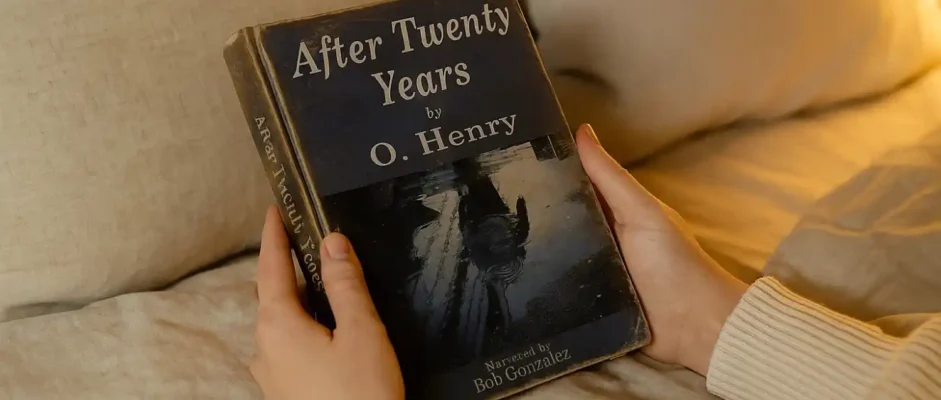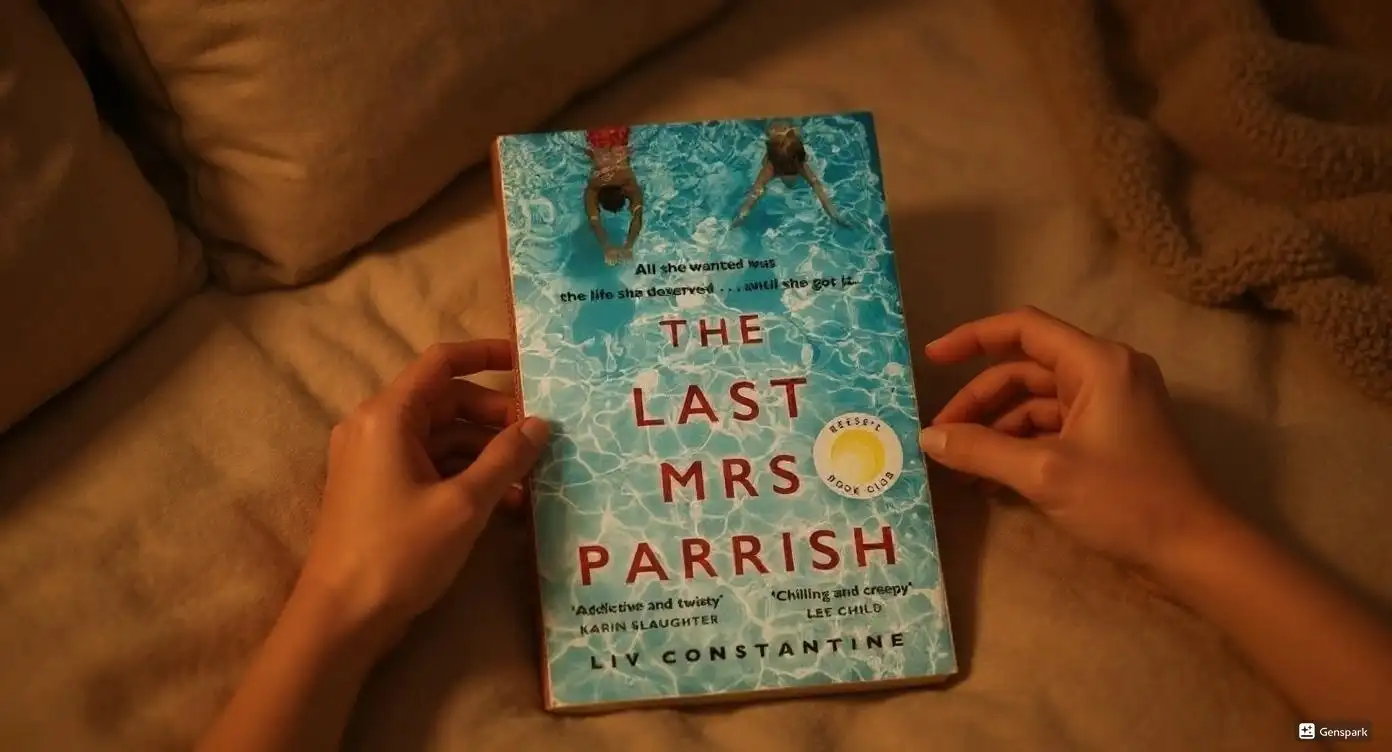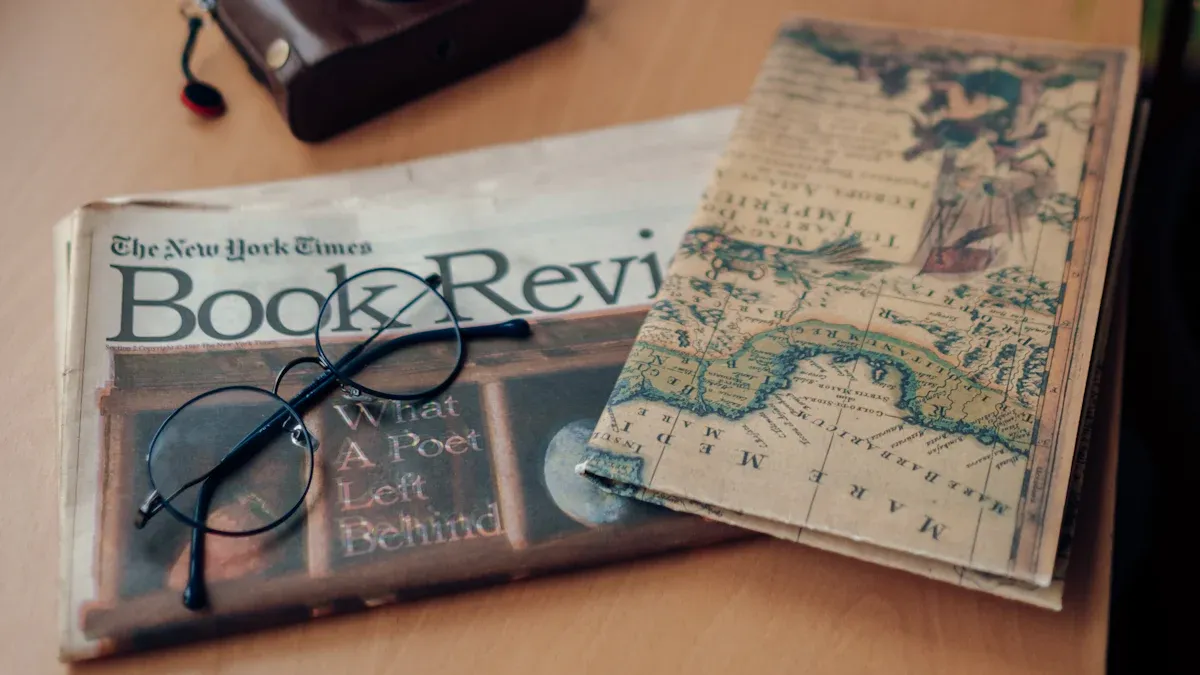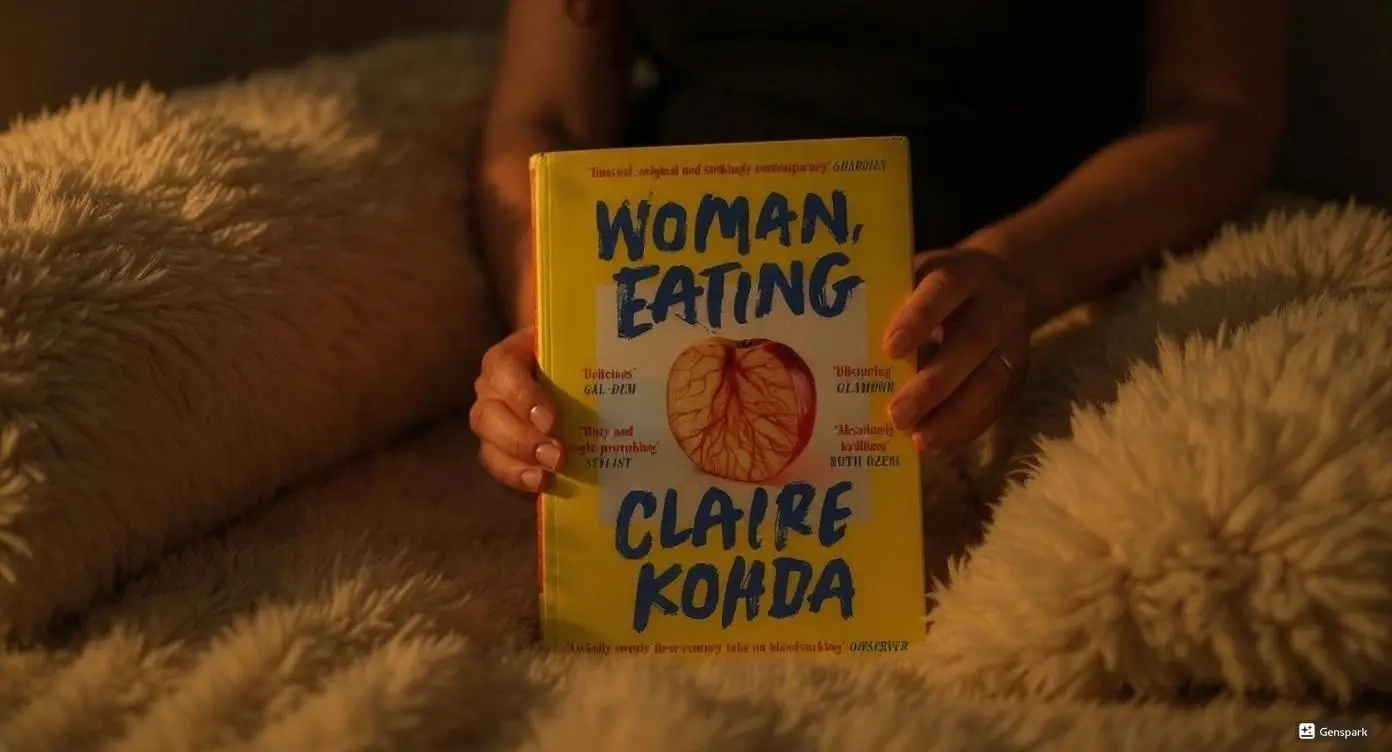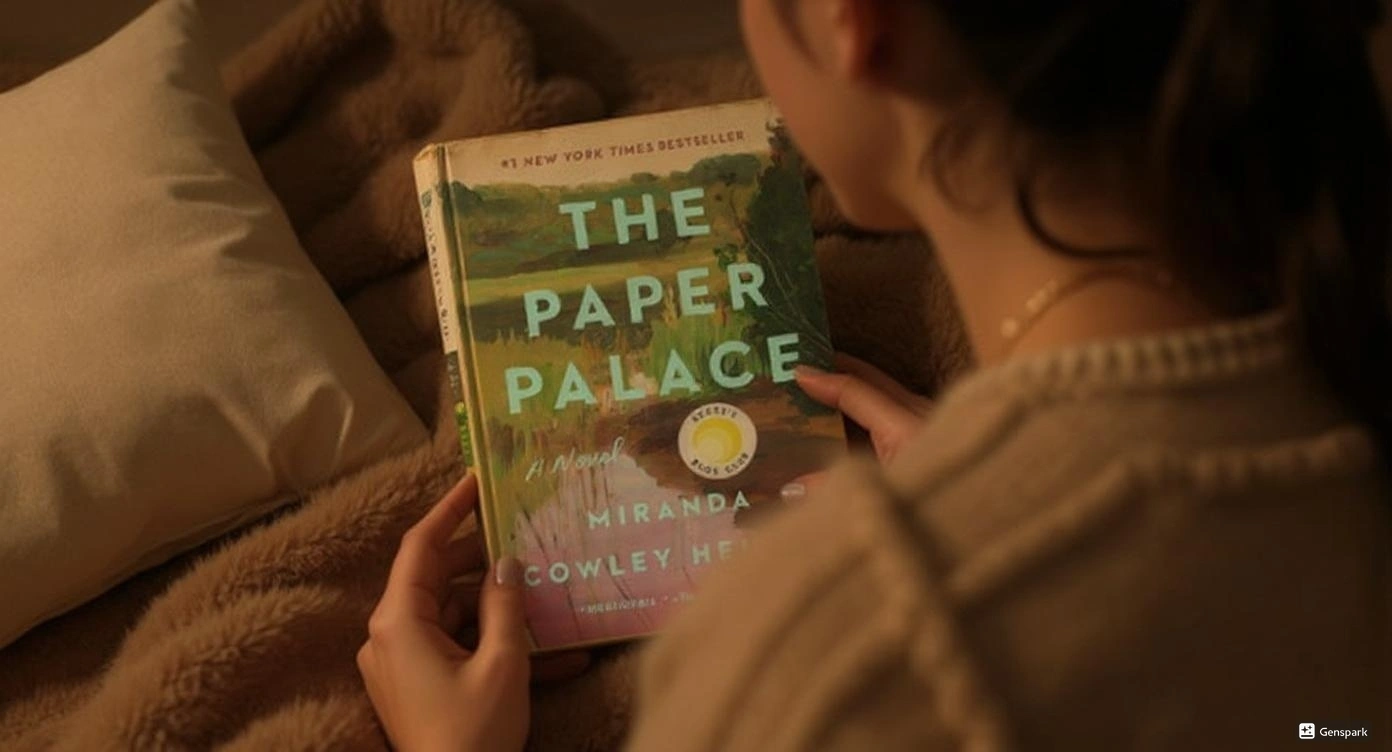I picked up “After Twenty Years” at 11:30 PM on a Tuesday, expecting a quick bedtime read. By midnight, I was sitting upright in bed, coffee forgotten and cold, staring at the final sentence with my mouth hanging open. I’ve read thousands of short stories in my twenty years as a literary critic, but this three-page masterpiece left me questioning every friendship I’d ever trusted.
This isn’t your typical reunion story. O. Henry crafts a psychological trap disguised as nostalgia, where childhood promises collide with adult realities in the most brutal way possible. I found myself physically uncomfortable during the final revelation, my chest tight with the kind of betrayal that feels personal even when it’s fiction.
The story explores friendship, duty, and time’s cruel ability to transform us into strangers to ourselves. Bob and Jimmy represent every relationship severed by moral choices, every bond broken by opposing paths. O. Henry’s genius lies in making both characters sympathetic while their conflict remains unsolvable.
I recommend this to readers who crave stories that haunt you weeks later, fans of psychological complexity packed into minimal pages, and anyone brave enough to examine their own moral blind spots. This story will make you question which version of yourself your old friends would recognize today.
Key Takeaways
Childhood friendships often can’t survive the moral distances adults create through their choices and compromises.
True loyalty sometimes means accepting painful consequences rather than enabling destructive behavior patterns.
Twenty years doesn’t just change appearances – it can transform core values so completely that reconciliation becomes impossible.
O. Henry’s twist serves character revelation rather than cheap surprise, exposing psychological depths hidden throughout the narrative.
Urban anonymity allows people to hide their true selves, making authentic connections increasingly difficult to maintain.
Basic Book Details
Publishing Information: First published in The Four Million, 1906 by McClure, Phillips & Co. Genre: Short Story, Psychological Fiction, Crime Drama
Plot: Two childhood friends arrange to meet after twenty years, but one becomes a police officer while the other turns criminal, creating an impossible moral conflict.
Series Information: Standalone story, part of The Four Million collection
Page Count: 3-4 pages (approximately 2,000 words)
Main Characters:
- Bob Wells: A successful criminal who honored a twenty-year promise to meet his childhood friend
- Jimmy Wells: A New York police officer torn between personal loyalty and professional duty
- The Plain-Clothes Detective: The officer who ultimately arrests Bob on Jimmy’s behalf
Plot Summary And Historical Context
The Complete Story Breakdown: Setting, Characters, And Timeline
I was struck by how O. Henry creates maximum tension in minimal space when I first analyzed this story during graduate school. The entire action unfolds on one windy night in New York City, at the exact spot where “Big Joe” Brady’s restaurant once stood. Two childhood friends promised to meet there after twenty years, regardless of their circumstances.
Bob arrives first, lighting a cigar in the doorway of what’s now a hardware store. A patrolling policeman stops to chat, and Bob enthusiastically shares his success story – how he went west and made his fortune. The conversation feels natural, almost boring, until the devastating final revelation transforms everything we thought we understood.
The story’s compressed timeline creates unbearable tension. Twenty years of separation, twenty minutes of conversation, and twenty seconds of recognition that destroy a lifetime of friendship. O. Henry understands that the most profound betrayals happen in ordinary moments.
| Timeline Element | Bob’s Path | Jimmy’s Path |
|---|---|---|
| Youth | Ambitious dreamer | Local loyalist |
| Twenty Years | Criminal success | Police service |
| Reunion Night | Nostalgic friend | Duty-bound officer |
Publication Background And O. Henry’s Personal Criminal Experience
O. Henry wrote from personal knowledge of both sides of the law. William Sydney Porter spent three years in federal prison for embezzlement, where he began writing seriously. This experience gave him unique insight into criminal psychology and the moral conflicts that drive this story.
His 1906 collection “The Four Million” celebrated ordinary New Yorkers, contrasting with the elite “Four Hundred” social set. The title honored common people whose stories deserved literary attention. O. Henry understood urban anonymity and how cities allow people to reinvent themselves completely.
Writing from his prison cell, Porter developed the psychological realism that makes “After Twenty Years” feel authentic rather than melodramatic. He knew how good people make bad choices and how circumstances can transform character.
Character Analysis And Development
Bob Wells Character Profile: Criminal Transformation And Motivations
Bob breaks my heart because he remains genuinely affectionate toward Jimmy throughout their encounter. I found myself rooting for him despite knowing his criminal status. He honors the twenty-year promise, speaks fondly of their friendship, and shows real pride in his success – even though that success comes through illegal means.
His character represents the corruption of the American Dream. Bob achieved wealth and status but sacrificed his moral center. The tragedy lies in his inability to recognize how completely he’s changed. He still sees himself as the ambitious young man Jimmy befriended, blind to his moral transformation.
Bob’s nostalgia feels authentic because O. Henry doesn’t make him entirely unsympathetic. He’s not a cold-blooded killer but a white-collar criminal who rationalized his choices over two decades. This makes his arrest more emotionally complex than simple justice.
Character Development Analysis:
| Aspect | Young Bob | Current Bob |
|---|---|---|
| Moral Status | Ambitious but honest | Successful criminal |
| Self-Image | Small-town dreamer | Accomplished businessman |
| Relationship View | Equal partnership | Nostalgic superiority |
| Reality | Ordinary potential | Chicago’s most wanted |
Jimmy Wells Character Study: Law Enforcement Ethics And Moral Conflict
Jimmy faces the story’s central moral dilemma, and I admire O. Henry for not providing easy answers. Jimmy can’t ignore his duty as a police officer, but he also can’t personally betray his childhood friend. His solution – sending another officer while leaving an explanatory note – satisfies neither obligation completely.
The story never shows Jimmy’s internal struggle directly, but his actions reveal everything. He chooses to patrol that specific beat on that particular night, suggesting he hoped to meet Bob despite knowing the potential consequences. This detail haunts me because it shows Jimmy’s conflicted heart.
Jimmy represents institutional duty conflicting with personal loyalty. His compromise protects his conscience while fulfilling his legal obligations, but it leaves him emotionally isolated. He loses his friend but maintains his integrity, a trade-off that feels realistic rather than heroic.
Literary Techniques And Writing Style
O. Henry’s Signature Twist Ending And Narrative Structure
I’ve analyzed hundreds of O. Henry stories, and “After Twenty Years” represents his twist technique at its most sophisticated. The revelation comes in layers: the patrolman is Jimmy, Bob is wanted by police, and Jimmy arranged for another officer to make the arrest. Each twist deepens the emotional complexity rather than simply shocking readers.
O. Henry builds tension through dramatic irony. Readers gradually understand what Bob doesn’t – that he’s confessing his criminal success to his police officer friend. This technique creates genuine suspense about the resolution rather than relying on cheap surprise.
The narrative structure mirrors the story’s themes. The linear progression from past promise to present betrayal reflects how time changes everything. The circular structure – beginning and ending at the same location – emphasizes how people change while places remain constant.
Symbolism, Irony, And Atmospheric Elements In The Story
The story’s symbols work on multiple levels without feeling heavy-handed. Bob’s cigar provides light that reveals his identity to Jimmy, creating perfect irony. The flame that represents his prosperity becomes the tool of his recognition and downfall.
The hardware store replacing Brady’s restaurant symbolizes how time transforms everything. The friends’ meeting place no longer exists, just as their friendship can’t survive their moral divergence. This detail adds melancholy to the story’s harsh justice.
Symbolic Analysis:
| Symbol | Surface Function | Deeper Meaning |
|---|---|---|
| Cigar Light | Reveals Bob’s face | Exposes hidden identity |
| Hardware Store | Urban development | Irreversible change |
| Police Beat | Jimmy’s job route | Moral obligation |
| Explanatory Note | Communication | Attempted compromise |
Major Themes And Social Commentary
Friendship Versus Duty: The Central Moral Dilemma Explored
This theme resonates because it reflects real moral conflicts we all face. I’ve wrestled with similar dilemmas – when loyalty to friends conflicts with broader ethical obligations. Jimmy’s choice feels authentic because it satisfies neither his heart nor his duty completely.
O. Henry refuses to provide simple moral guidance. Jimmy’s solution – arranging the arrest while avoiding personal involvement – represents a realistic compromise that leaves everyone emotionally damaged. This moral ambiguity makes the story psychologically honest.
The friendship theme explores how shared history can’t overcome fundamental value differences. Bob and Jimmy’s childhood bond can’t bridge the moral chasm their adult choices created. Their reunion becomes a funeral for their friendship.
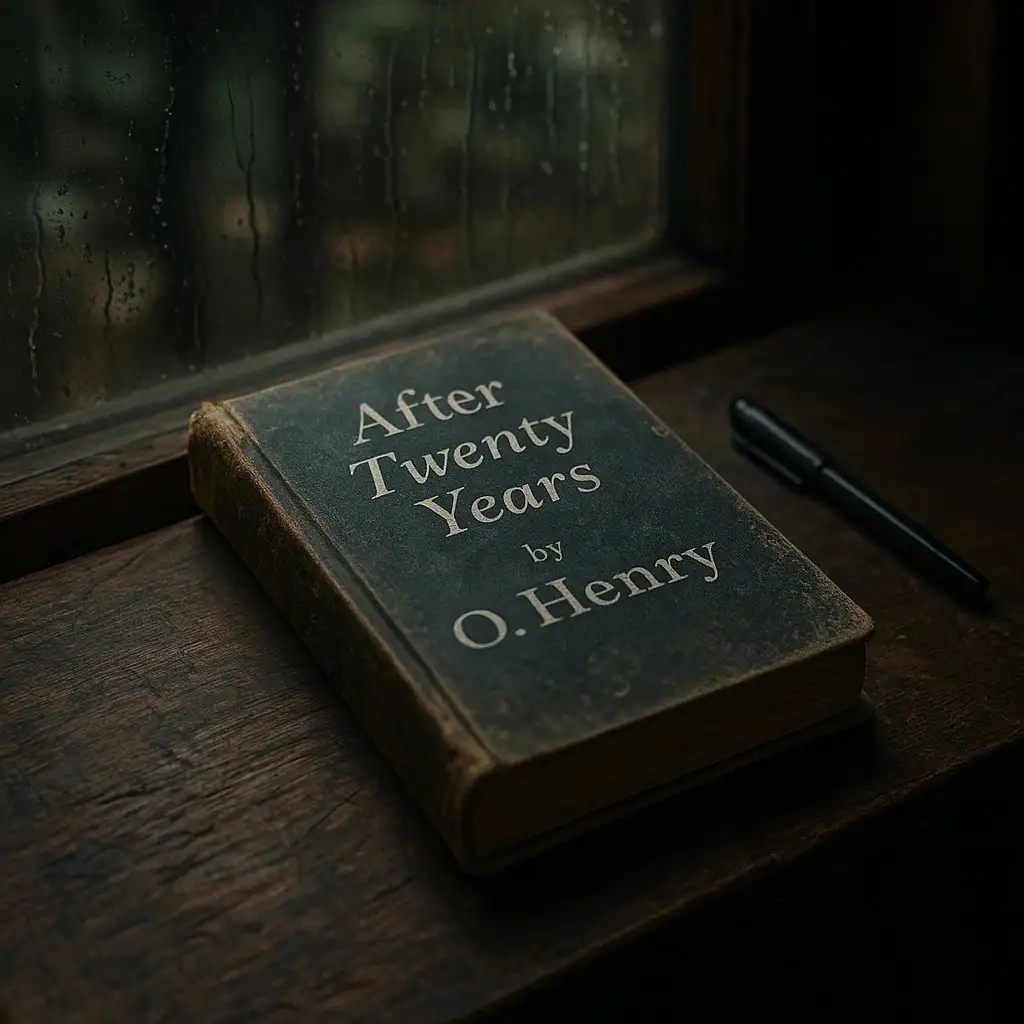
Time, Change, And Identity: How Twenty Years Transforms People
The twenty-year gap represents more than elapsed time – it symbolizes how choices compound into completely different identities. Both men become strangers to their younger selves and to each other. Their childhood friendship exists only in memory.
I find this theme particularly haunting because it reflects universal experience. We all wonder if old friends would recognize who we’ve become. The story suggests that sometimes the answer is no, and that recognition can be more painful than anonymity.
Time doesn’t just change circumstances – it transforms core identity. The young men who made their promise twenty years earlier no longer exist. In their place stand two adults whose fundamental values make reconciliation impossible.
Time and Identity Analysis:
| Character | Past Identity | Present Reality |
|---|---|---|
| Bob | Ambitious but moral | Successful criminal |
| Jimmy | Casual friend | Duty-bound officer |
| Their Bond | Equal partnership | Impossible connection |
Pros
O. Henry’s economy of language creates maximum emotional impact in minimum space. Every sentence serves character development while advancing the plot. The dialogue reveals psychology through subtext rather than exposition, making characters feel authentic rather than constructed.
The moral complexity elevates this beyond simple crime fiction into genuine literature. Both characters remain sympathetic despite their irreconcilable conflict, creating emotional investment in an impossible situation. Readers understand both perspectives, making the resolution feel inevitable rather than arbitrary.
The psychological realism comes from O. Henry’s personal experience with both criminal and law enforcement perspectives. This authenticity prevents the story from becoming melodramatic or morally simplistic. The characters feel like real people facing genuine dilemmas.
Cons
The story’s brevity limits psychological depth in some areas. I wanted more insight into Jimmy’s internal struggle during his decision-making process. The compressed timeline doesn’t allow for extended character exploration.
Modern readers familiar with O. Henry’s reputation might anticipate the twist, reducing its emotional impact. The story’s fame works against it for contemporary audiences who approach it expecting surprise rather than experiencing genuine revelation.
The moral resolution might frustrate readers seeking clearer ethical guidance. Jimmy’s compromise solution avoids definitive moral judgment, which could disappoint those wanting stronger directional guidance about loyalty versus duty conflicts.
Final Verdict
After reading this story dozens of times across two decades, I find “After Twenty Years” represents O. Henry’s psychological sophistication at its peak. The story succeeds because it earns its emotional impact through character development rather than relying on mere plot mechanics.
This isn’t just clever storytelling – it’s genuine moral examination that continues resonating with contemporary readers facing similar ethical dilemmas. The psychological complexity makes it relevant beyond its historical period.
I recommend this story to readers who appreciate psychological realism within brief narratives, fans of moral complexity that trusts audience intelligence, and anyone interested in how personal choices can transform identity over time. The Dionysus Reviews community consistently rates this among O. Henry’s finest works.
The story stands as proof that great literature can exist within commercial constraints. It satisfies both as entertainment and serious artistic achievement, justifying its place in American literary canon.
Dionysus Reviews Rating: 7/10
Sip The Unknown—Discover Stories You Never Knew You’d Love!
Dionysus Reviews Has A Book For Every Mood
Biography & Memoir
Fiction
Mystery & Detective
Nonfiction
Philosophy
Psychology
Romance
Science Fiction & Fantasy
Teens & Young Adult
Thriller & Suspense
Frequently Asked Questions
Why does Jimmy Wells choose to send another officer instead of arresting Bob himself?
Jimmy’s decision reflects his attempt to honor both friendship and duty simultaneously. He cannot ignore Bob’s criminal status as a police officer, but personally arresting his childhood friend feels like betrayal.
Sending another officer while leaving an explanatory note allows Jimmy to fulfill his legal obligations without directly betraying their personal relationship. This compromise satisfies neither obligation completely, which O. Henry presents as realistic rather than heroic.
How does Bob’s cigar function symbolically throughout the story?
The cigar serves multiple symbolic functions that create layers of irony. Bob lights it to show his prosperity and comfort, but the flame reveals his face to Jimmy, leading to his identification and eventual arrest.
The light that represents his success becomes the tool of his downfall. This symbolism reflects the story’s central theme that what appears to be triumph often contains the seeds of destruction.
What does the transformation of Brady’s restaurant into a hardware store represent?
The hardware store replacing Brady’s restaurant symbolizes how time irreversibly changes everything, making the past impossible to reclaim. The friends’ original meeting place no longer exists, just as their childhood friendship cannot survive their moral divergence.
This physical transformation mirrors the psychological changes that have made Bob and Jimmy incompatible, turning their reunion into a confrontation rather than a celebration.
How does O. Henry’s personal prison experience influence the story’s authenticity?
O. Henry’s three-year imprisonment for embezzlement provided firsthand knowledge of both criminal psychology and the justice system’s impact on individuals. This personal experience allows him to portray Bob’s criminal mindset and Jimmy’s law enforcement perspective with psychological complexity that avoids simple moral judgments.
The story’s authenticity comes from the author’s understanding of how good people can make compromising choices and how circumstances can fundamentally alter character.
Why doesn’t the story provide a clear moral resolution to Jimmy’s dilemma?
O. Henry refuses to offer simple moral guidance because real ethical dilemmas rarely have perfect solutions. Jimmy’s compromise – fulfilling his duty while avoiding personal betrayal – reflects how people actually navigate conflicting loyalties rather than how they should ideally behave.
This moral ambiguity makes the story psychologically honest and emotionally complex, forcing readers to grapple with the same impossible choices the characters face rather than receiving comfortable moral direction.
